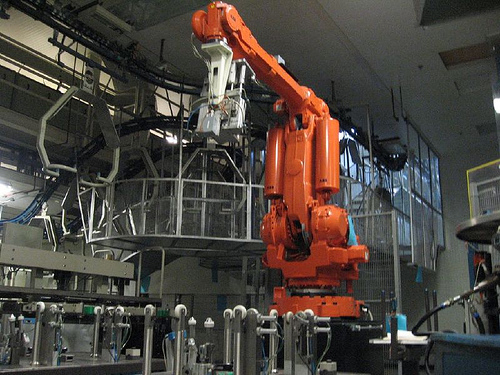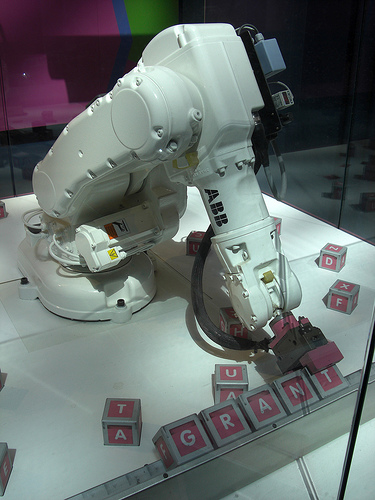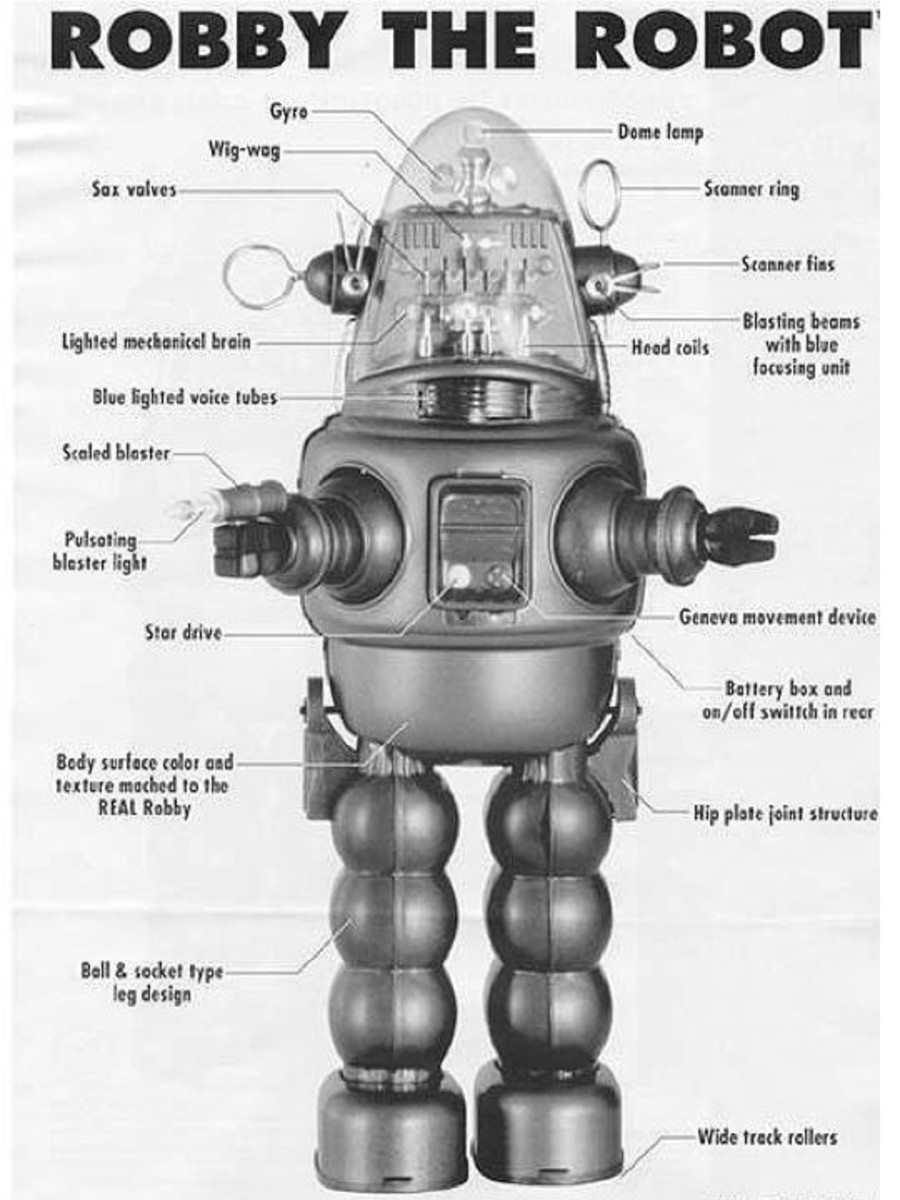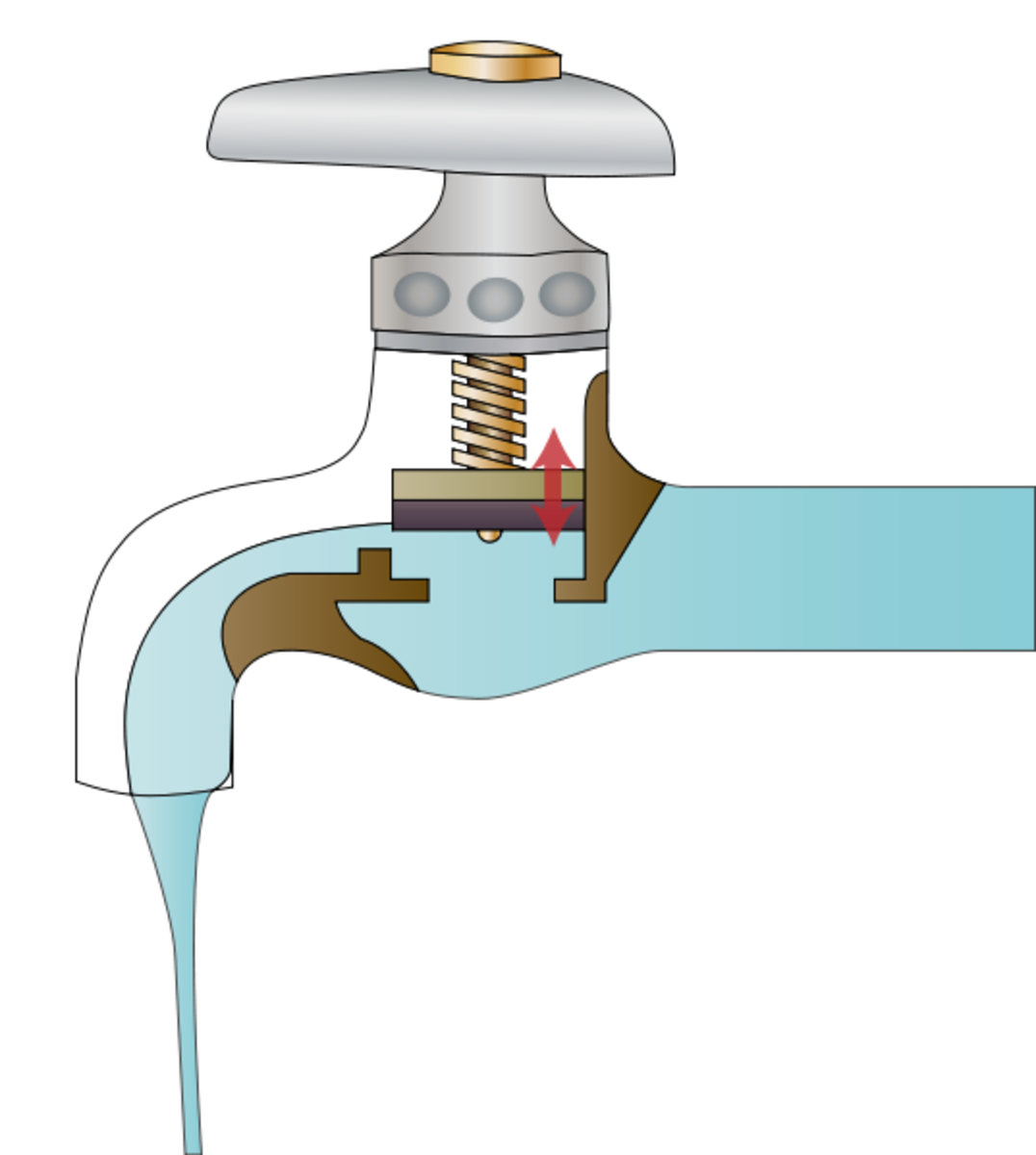CIM - Numerically controlled machines & Industrial Robots
NUMERICALLY CONTROLLED MACHINES
Numerically Controlled (NC) Machines are large machine tools programmed to produce small- to medium-sized batches of intricate parts. Following a preprogrammed sequence of instructions, NC machines drill, turn, bore, or mill many different parts in various sizes and shapes. The technology was developed in the early 1950s at the Massachusetts Institute of Technology to find more efficient methods of manufacturingjet aircraft for the U.S. Air Force.
- Computer Integrated Manufacturing - CIM
Computer-integrated manufacturing (CIM) is an umbrella term for the total integration of product design and engineering, process planning, and manufacturing by means of complex computer systems.
Numerically Controlled (NC) Machines are a tool used in Computer-Integrated Manufacturing or CIM.
Please click the link to read more about Computer-Integrated Manufacturing.
Currently, NC machines are the most commonly used form of flexible (programmable) automation. Early models received their instructions from a punched tape or card. Computerized numerically controlled (CNC) machines are usually stand-alone pieces of equipment, each controlled by its own microcomputer. Since the early 1980s, Japanese industry has spent twice as much money as North American or European industry on factory equipment, more than half of which went for CNC machines. NC and CNC machines rank just after CAD in terms of the most popular CIM technologies.

INDUSTRIAL ROBOTS
Robots are more glamorous than NC workhorses. The first industrial robot joined the GM production line in 1961. Industrial robots are versatile, computer-controlled machines programmed to perform various tasks. These “steel-collar” workers operate independently of human control. Most are stationary and mounted on the floor, with an arm that can reach into difficult locations. Figure K.1 shows the six standard movements of a robot’s arm. Not all robots have every movement.
The robot’s “hand,” sometimes called an end effector or tool, actually does the work. The hand (not shown) can be changed to perform different tasks, including materials handling, spot welding, spray painting, assembly, and inspection and testing.
Second-generation robots equipped with sensors that simulate touch and sight have spawned new applications. For example, robots can wash windows, pick fruit from trees, mix chemicals in laboratories, and handle radioactive materials.
The initial cost of a robot depends on its size and function. Other potential costs include modifying both product and process to accommodate the robot, preparing the worksite, installing and debugging the robot, and retraining and relocating workers.
Benefits from robot installation include less waste materials, more consistent quality, and labor savings. Robots are the drudges of the workforce, performing highly repetitive tasks without tiring, taking a lunch break, or complaining.
By the late 1980s, there were more than 20,000 robots in North America, 28,000 in Europe, and 80,000 in Japan. The conversion of U.S. industry to robots has fallen short of expectations: Less than 30 percent of manufacturers have even moderate experience with robots. One possible reason is that U.S. employers have not faced a labor shortage, whereas in Japan a limited supply of workers led the government to subsidize robots. Cincinnati Milacron, the last big U.S. robot maker, recently left the robot business and returned to making basic machine tools. Robotics is but one of many possible technologies that can be used to gain a competitive advantage.
- CIM - Computer the Aided Design and Manufacturing
Computer-aided design (CAD) is an electronic system for designing new parts or products or altering existing ones, replacing drafting traditionally done by hand. The component of CIM that deals directly with manufacturing operations is called compute - CIM - Flexible Manufacturing the System
A flexible manufacturing system (FMS) is a configuration of computer-controlled, semiindependent workstations where materials are automatically handled and machine loaded. - CIM - Automated Materials the Handling
Materials handling covers the processes of moving, packaging, and storing a product. Moving, handling, and storing materials cost time and money but add no value to the product.









